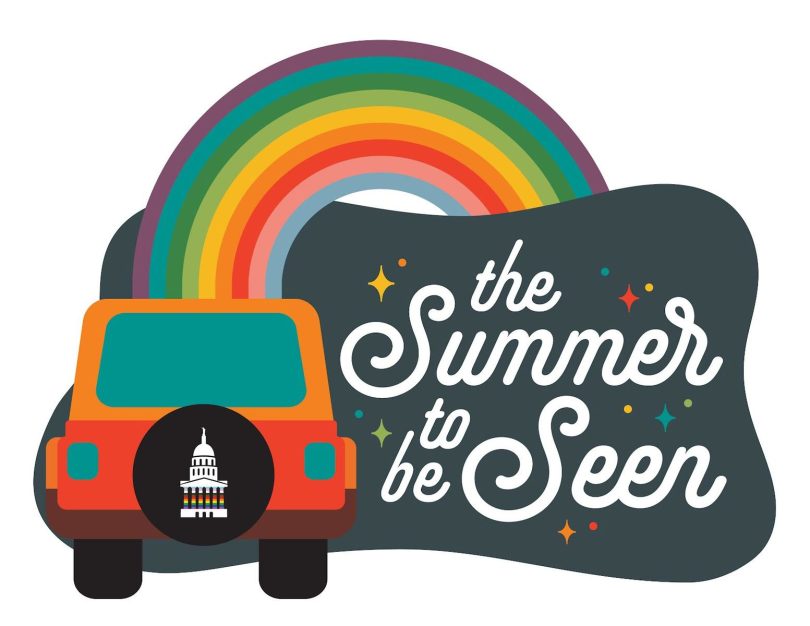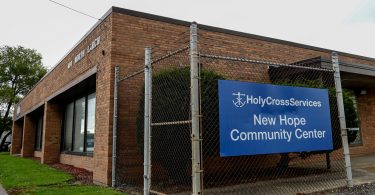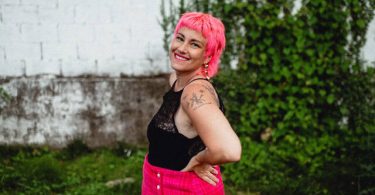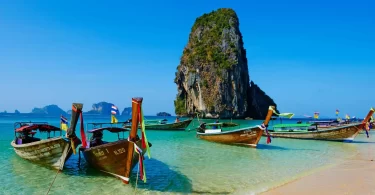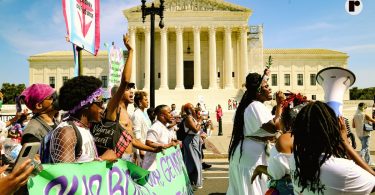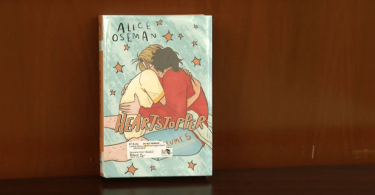Thirty years ago this June, local researchers partnered with Jim Kepner of the ONE National Gay & Lesbian Archives (now the One Institute) to create Wisconsin’s first local history exhibit. Under the guidance of Don Schwamb, the exhibit – now known as the Wisconsin LGBTQ History Project – grew to become the state’s largest digital collection of LGBTQ historical media.
To celebrate this milestone anniversary, the History Project is taking the show on the road with The Summer to Be Seen, an interactive traveling exhibit celebrating the people, places, events, and organizations that amplified LGBTQ visibility. Between June 1 and October 5, the Project will support sixteen hometown pride celebrations in every corner of Wisconsin.
Visibility matters more than ever
“We may have started at PrideFest Milwaukee, but we are dedicated to all Wisconsin communities,” said Don Schwamb, founder of the History Project. “It always bothered me that the History Project displays were only seen 2-3 days each year at PrideFest, before returning to storage until the next year’s festival. We have finally achieved my dream of being a year-round educational resource, instead of just being a weekend exhibit. Pride is a way of life in 2024, not just something you do one weekend a year. People can now be seen in their hometown communities in a way that would have been impossible in 1994.”
“In an election year, there are over 500 anti-LGBTQ bills swirling in state legislatures, censors have targeted thousands of books in schools and libraries, and hometown prides have been threatened and silenced by actual Nazis right here in Wisconsin,” said Schwamb. “It’s never been more important for our people, our history, and our heritage to be seen.”
“The Summer To Be Seen is both a celebration and a call to action.”
The summer tour kicks off Friday, May 31 at Art*Bar Milwaukee with the opening of the Douglas Krimmer Collection. Krimmer (1951-2023) was an esteemed local photographer who chronicled the earliest pride events at a time when most media ignored or excluded the LGBTQ community. At the same time, early pride events were emotionally charged marches, rallies, and protests – remembered as meaningful, but not exactly festive experiences. Being seen at a pride event was an act of political defiance. Krimmer’s rich, colorful photos demonstrate how far we’ve come – but also remind us never to become too comfortable or complacent.
“We were so honored that the Krimmer family chose to donate his collected works to the History Project,” said B.J. Daniels, board member. “As someone who attended those first few pride events, I remember how it felt to be unseen and ignored by mainstream media. We knew we had to do something to celebrate this man, who celebrated our community for who and what we were, when no one else would. We are thankful to Don Krause, owner of Art*Bar, for making this exhibit possible.”
The event also commemorates the 20th anniversary of Art*Bar Milwaukee, which opened in summer 2004 after a two-year renovation. Today, Krause owns the entire block, including Art*Bar, Two, and Wonderland.
Uniting the pride nation
The Summer to Be Seen Tour will visit pride events of all sizes, ranging from first-time rallies to long-established festivals. Beyond the goals of outreach, education, and activation, the History Project seeks to support, unite, and amplify the work of hometown pride organizations.
“There was a time when Milwaukee had no local pride events, and people had to travel to Chicago for the annual parade,” said B.J. Daniels. “It took brave and spirited people to create that experience in Milwaukee. Now, we have brave and spirited people doing this all over Wisconsin, and they need to know we see them, we support them, and we are all in this together. We want them to be part of our movement to collect and preserve the stories of the LGBTQ community.”
Brady Street Festival (Saturday, July 20) is an especially nostalgic stop this year. Throughout the 1970s, Gay People’s Union, local leaders in gay liberation, hosted an annual booth that offered historical exhibits, support services, volunteer opportunities, and a kissing booth fundraiser. GPU also handed out identical helium balloons imprinted “This is a Gay Balloon” and “This is a Straight Balloon” to confront homophobia.
“We are proud to bring a ‘retro’ exhibit back to Brady Street after all these years,” said Schwamb. “I can only imagine how proud the GPU founders would be, knowing their message was still alive over 50 years later.”
“We want people to know that they aren’t alone, no matter where they live,” said Daniels. “They stand on the shoulders of giants, and they should take that as a sign of courage to become the giants of the future. I hope our tour inspires people to be proud of their heritage, to know their past struggles, and to seek out the advice and counsel of those who paved the way. And most importantly, to know that the community has faced challenges before, and that we have triumphed and will triumph again.”
“Knowing you have a rich history makes you feel less alone, especially in an election year like no other.”
Inspiring generation next
Although the History Project was founded in 1994, the non-profit organization has seen explosive growth and transformation in the past few years.
In 2021, the Project incorporated as an official Wisconsin non-profit under the leadership of a volunteer Board of Directors and the fiscal agency of Cream City Foundation. Last year, the Project launched a statewide resource network of 20 diverse Community Advisors who inform and influence strategy, content, and programming. This spring, the organization launched a “Story Corps” responsible for collecting, composing and publishing oral histories, and partnered with University of Wisconsin and Marquette University educators to create a formal internship program.
“The History Project began as a personal hobby,” said Schwamb. “It’s grown beyond my wildest dreams, and continues to grow more every day. It’s humbling to see professional researchers, news media, and government organizations, even the Library of Congress, recognizing us as the go-to authority for local LGBTQ history. I’m also proud that we remain an all-volunteer, unpaid organization after all these years. Our volunteers do this work because they want to make a difference.”
“There’s a definite yearning out there, across generations, for a connection to our past. People want to not only learn and teach history, but make and change history. And together, we will!”
Volunteers needed
The History Project seeks volunteers to support the Summer to Be Seen at all 16 tour stops throughout Wisconsin. Contact us at [email protected] to learn more.
Explore over a century of local LGBTQ history at the Wisconsin LGBTQ History Project website.
Michail Takach
Special to OnMilwaukee
@michailtakach
Growing up in a time of great Downtown reinvention, Michail Takach became fascinated with Milwaukee’s urban culture, landmarks and neighborhoods at a young age. He’s been chasing ghosts ever since. Michail, a lifelong Milwaukeean, dreaGrowing up in a time of great Downtown reinvention, Michail Takach became fascinated with Milwaukee’s urban culture, landmarks and neighborhoods at a young age. He’s been chasing ghosts ever since. Michail, a lifelong Milwaukeean, dreams of the day when time travel will be possible as he’s always felt born too late. Fearlessly exploring forbidden spaces and obsessively recording shameless stories, Michail brings local color to the often colorless topic of local history. As an author, archivist and communications professional, Michail works with community organizations (including Milwaukee Pride and Historic Milwaukee) to broaden the scope of historical appreciation beyond the “same old, same old.”

